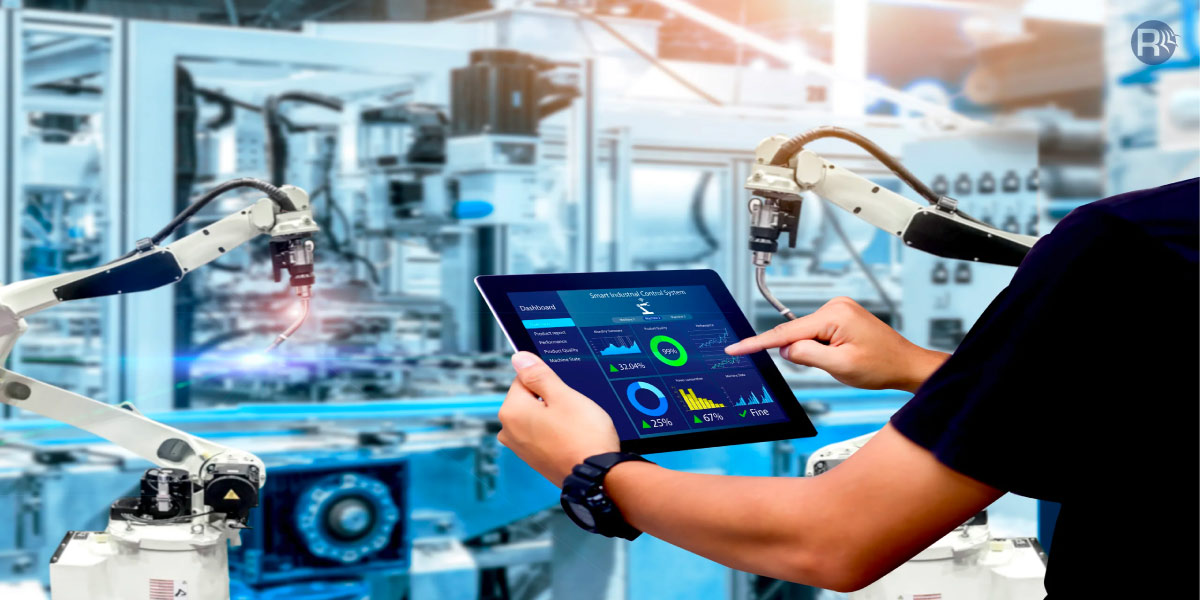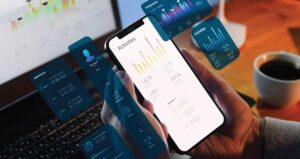As industries increasingly adopt IoT solutions, asset tracking has evolved from mere location monitoring to a comprehensive ecosystem of interconnected devices, sensors, and data analytics. Whether you’re managing fleets of vehicles, monitoring vital equipment, or ensuring a seamless flow of inventory across warehouses, IoT asset tracking holds the key to gain visibility into every aspect of your supply chain for better decision-making.
In this blog post, we’ll cover the benefits that effective IoT asset tracking can reap, and the common technologies used. We have explored the detailed real-time use cases and applications of asset tracking using IoT for effective asset management.
Key Benefits of IoT-enabled Asset Tracking & Monitoring
Asset tracking using IoT offers several benefits ranging from optimization and cost-savings to loss-prevention, predictive analytics. Organizations that embrace it open themselves to a world of transformative possibilities. Here are some advantages of IoT Asset tracking system.
Real-time Visibility
It enables real-time asset tracking, providing accurate and up-to-date location information. Real-time visibility allows your business to make decisions faster and prevents costly problems like lost inventory, delayed deliveries, or equipment failures.
Analytics and Insights
The data collected by IoT devices helps understand the asset’s usage patterns and performance trends. It further reveals potential failures or operational bottlenecks before they occur. The shift from guesswork to data-driven actionable insights helps reduce downtime and costly repairs.
Enhanced Asset Security
It enhances security features, including geo-fencing and alarms triggered by unauthorized movements to safeguard the asset from enhanced security features, including geo-fencing and alarms triggered by unauthorized movements.
Predictive Maintenance
IoT sensors embedded in assets continuously collect data about critical parameters. This data is further analyzed by advanced algorithms and AI models to predict common anomalies and identify potential issues before they become critical. This helps in proactive maintenance and minimizes downtime, reduces costly repairs, and ultimately extending your asset’s lifespan.
Less Supply Chain Disruptions
As you gain real-time visibility into the location of assets at each phase of the supply chain, IoT data helps your business proactively pinpoint potential bottlenecks. Early warning enabled by IoT tracking results in the safe and intact delivery of goods to their destination without any issues. It also helps in improving customer service and more efficient service levels.
Improved Efficiency & Time Management
IoT-enabled asset monitoring comes with enhanced automation capabilities which helps in reducing the need for manual intervention. This streamlines workflows and minimizes delays, leading to improved operational efficiency, increased productivity and resource optimization.
Regulatory Compliance
Asset tracking using IoT technology helps organizations to effortlessly track and document compliance-related parameters which helps adhere to regulatory requirements. This is particularly important in industries where compliance is heavily regulated because by automatically compiling verifiable records, IoT asset tracking solutions minimize the risk of non-compliance penalties.
Industries Benefiting from IoT Asset Tracking System
IoT asset tracking can provide significant benefits across a wide range of industries. Here are several industries that particularly benefit from implementing IoT-based asset tracking solutions.
Logistics and Transportation
IoT enables real-time tracking of shipments, vehicles, and containers for greater transparency. It helps optimize route planning to reduce delays and fuel consumption, monitor vehicle conditions, and enhance supply chain visibility and efficiency. It further helps leverage predictive maintenance to maximize vehicle uptime.
Manufacturing
IoT asset tracking system is utilized for tracking and monitoring machinery, tools, and inventory which allows manufacturers to optimize inventory management and even ensure equipment maintenance to prevent costly downtime. The data constantly gathered from IoT sensors also offers data-driven actionable insights into production efficiency, potential bottlenecks which improve overall equipment effectiveness.
Healthcare
Asset tracking in healthcare involves monitoring the location and status of critical medical equipment, such as infusion pumps, wheelchairs, and diagnostic devices.
The IoT application for asset tracking and health monitoring ensures optimized inventory management, prevents shortage or overstocking of expensive supplies and eventually allows healthcare workers to focus on patient care and operational efficiency.
Retail
Retailers use IoT asset tracking to manage inventory, prevent stockouts, monitor product movement, and enhance the customer experience. It also helps combat theft and shrinkage as retailers can easily monitor high-value items. This technology further helps optimize supply chain processes by tracking temperature-sensitive goods like food or pharmaceuticals to ensure quality, compliance and reduce losses.
Common Asset Tracking and Monitoring Technologies
Discovering how assets are tracked and monitored is like uncovering a world of innovative technologies. Let’s explore the technologies used for asset tracking:
Barcodes & QR Codes
Simple, cost-effective, easy-to-implement, this solution consists of bars or squares that encode information about the asset, such as its ID number or serial number. It can be scanned using a barcode reader or smartphone app to track the asset’s location and movement.
GPS
Ideal for tracking assets like vehicles, trailers, or even livestock across vast distances in real-time. This technology leverages satellites to provide precise reallocation data. This makes it ideal for outdoor assets like construction equipment or agricultural vehicles.
Radio Frequency Identification (RFID)
A cost-effective way to track assets within range. There are two main types of RFID tags: active and passive. Active RFID offers real-time tracking, while passive tags boast longer lifespans and lower costs.
Ultra-wideband (UWB)
It is a high-frequency radio technology that can provide very accurate indoor tracking. UWB tags transmit signals to UWB anchors, then calculate the tag’s location. This technology is often used for high-value assets or for assets where precise location is critical.
Bluetooth Low Energy (BLE)
The low-power tracking solution can track assets within indoor environments. BL beacons are placed throughout an area, and BLE tags attached to assets transmit their location to the beacons. This cost-effective solution offers moderate accuracy and good indoor coverage, making it ideal for asset tracking within buildings or specific zones.
Cellular & Satellite IoT
Cellular and satellite connectivity provide essential tracking data for truly remote assets. Low-power cellular options like LTE CAT M1 and CAT1 revolutionize asset tracking across vast areas. This powerful option comes with higher costs and potential coverage limitations.
IoT Asset Tracking Use Cases and Application
IoT asset tracking proves to be a flexible technology with adaptability across diverse business and industry applications. Below are several sectors where IoT asset tracking systems have demonstrated successful implementations.
Supply Chain Optimization
IoT enables real-time tracking of shipments, vehicles, and containers. It contributes to:
- Optimizing route planning
- Monitoring vehicle conditions
- Enhancing supply chain visibility and efficiency
Organizations can enhance operational flexibility and help logistics and transportation businesses reduce capital and operational expenses.
Fleet Management
IoT-enabled tracking devices provide detailed insights into driver behavior, fuel consumption, and vehicle health. This data empowers organizations to:
- Optimize routes
- Reduce fuel costs
- Enhance operational efficiency
Healthcare Asset Management
Hospitals and health facilities must effectively monitor and manage their physical assets. Items like wheelchairs, infusion pumps, and patient monitors require continuous monitoring.
This proactive healthcare asset tracking approach empowers hospitals and clinics to:
- Improves patient care by minimizing wait times
- Real-time asset location
- Predictive Maintenance
- Compliance with regulations
Industrial Asset Monitoring
It monitors the condition of industrial machinery and equipment to provide real-time visibility and data-driven insights. By analyzing real-time data, organizations can predict:
- Potential failures
- Reduce downtime
- Extend the lifespan of assets
Retail Inventory Management
Retail businesses can utilize asset tracking using IoT to monitor real-time inventory levels. This empowers retailers with:
- Real-time inventory visibility
- Prevent stock-outs
- Reduction in theft and shrinkage
- Enhanced customer experience
Real-Life Examples of Popular IoT-based Asset Tracking System Implementation
IoT asset tracking offers real-time visibility and improved efficiency across diverse industries. Here are compelling real-life examples where implementing IoT for asset tracking has improved overall business efficiency.
Amazon
The e-commerce giant utilizes the power of IoT asset monitoring in its warehouses and delivery operations. By employing RFID tags and sensors, Amazon monitors the movement of products within its extensive network of warehouses.
- The IoT asset tracking system helps optimize delivery routes, reduce delivery times, increase efficiency, and prevent lost or misplaced items
- Additionally, it allows Amazon to provide customers with accurate tracking updates.
Walmart
Following Amazon’s lead, Walmart has actively adopted IoT asset management solutions.
- Utilizing IoT sensors and RFID identifiers, Walmart tracks customer behavior, product popularity, and inventory. The data-driven approach allows for targeted pricing, maximizing revenue, and improving customer experience through appropriate discounts.
- This e-commerce giant also employs IoT asset tracking to monitor energy usage, track expiry dates, and manage product lifecycles efficiently.
DHL
The global logistics and shipping company, leverages IoT asset tracking to enhance its operations and services. DHL uses IoT tracking sensors to promptly address temperature issues when transporting pharmaceuticals and perishables:
- Predictive maintenance is another area where DHL benefits from IoT. Sensors monitor engine health, tire condition, and fuel economy, allowing proactive maintenance and eliminating downtime.
- IoT asset tracking enables DHL to geo-fence high-value and sensitive shipments, ensuring real-time notifications when packages enter or leave.
- DHL monitors its environmental impact by measuring warehouse energy, fuel, and emissions, contributing to increased sustainability.
Why Choose Rishabh Software for IoT-based Asset Tracking?
We are a leading IoT consulting company with expertise in building innovative, smart applications that meet your specific business needs. Our value-driven IoT solutions and expertise across the entire IoT product development lifecycle, empower you to gain real-time visibility, optimize operations, and maximize efficiency of your assets.
From inventory management, equipment and operations monitoring, to supply chain management, we are your one-stop solutions partner to build and deploy a comprehensive IoT-enabled asset-tracking system. We can help you optimize every element of IoT deployment, including sensors, connectivity, and lifecycle management, platform analytics, and applications.
Our trusted IoT software development services and highly experienced team will help you integrate AI/ML capabilities into your system to enable predictive maintenance, optimize logistics, and gain valuable insights from your asset data.
Our expert team understands that every business has unique needs. That’s why we design and develop customized IoT asset tracking systems tailored to your industry, workflow, and budget.
Frequently Asked Questions
Q: What is IoT Asset Tracking?
A: It refers to using connected devices and technologies to monitor and manage physical assets in real time. IoT Asset Tracking aims to provide visibility and control into assets’ location, status, and conditions. These assets include vehicles, equipment, inventory, tools, or any other valuable items a business or organization wants to track.
Q: How Does IoT Asset Tracking Work?
A: IoT asset tracking uses connected devices attached to your assets to gather data. These devices, like GPS trackers or RFID tags, can tell you:
- Location: Where your assets are in real-time or over time.
- Condition: Temperature, vibration, or other environmental factors.
- Usage: How often and how much are your assets used?
This data gets sent wirelessly to a central platform, like the cloud. You can then access this information through software to:
- See your assets on a map: Track the equipment or asset movement instantly.
- Get alerts: Be notified if an asset leaves a designated area or experiences unusual conditions.
- Optimize usage: Schedule maintenance based on actual use, not guesswork.
- Reduce loss: Locate missing assets quickly and improve security.
So, this is how IoT asset monitoring works to redefine efficiency and control in managing assets remotely.
Q: How secure is data collected by IoT asset tracking devices?
A: The security of data collected by IoT asset tracking systems can vary depending on factors like the specific device, platform, and implementation. While it offers valuable benefits, security concerns require attention:
Potential risks:
- Device vulnerabilities: Devices themselves can have security flaws, allowing unauthorized access.
- Communication breaches: Data transmission between devices and platforms might be intercepted.
- Platform security: Cloud platforms storing data need robust security measures.
- User access control: Improper access control can lead to data leaks.
Security best practices:
- Choose reputable vendors: You should opt for devices and platforms with proven security track records.
- Strong encryption: Ensure that your data is encrypted at all times.
- Regular updates: Keep devices and platform software updated with security patches.
- Access control: Limit access to data based on roles and permissions.
- Network security: Implement strong network security protocols.









 30 Min
30 Min


